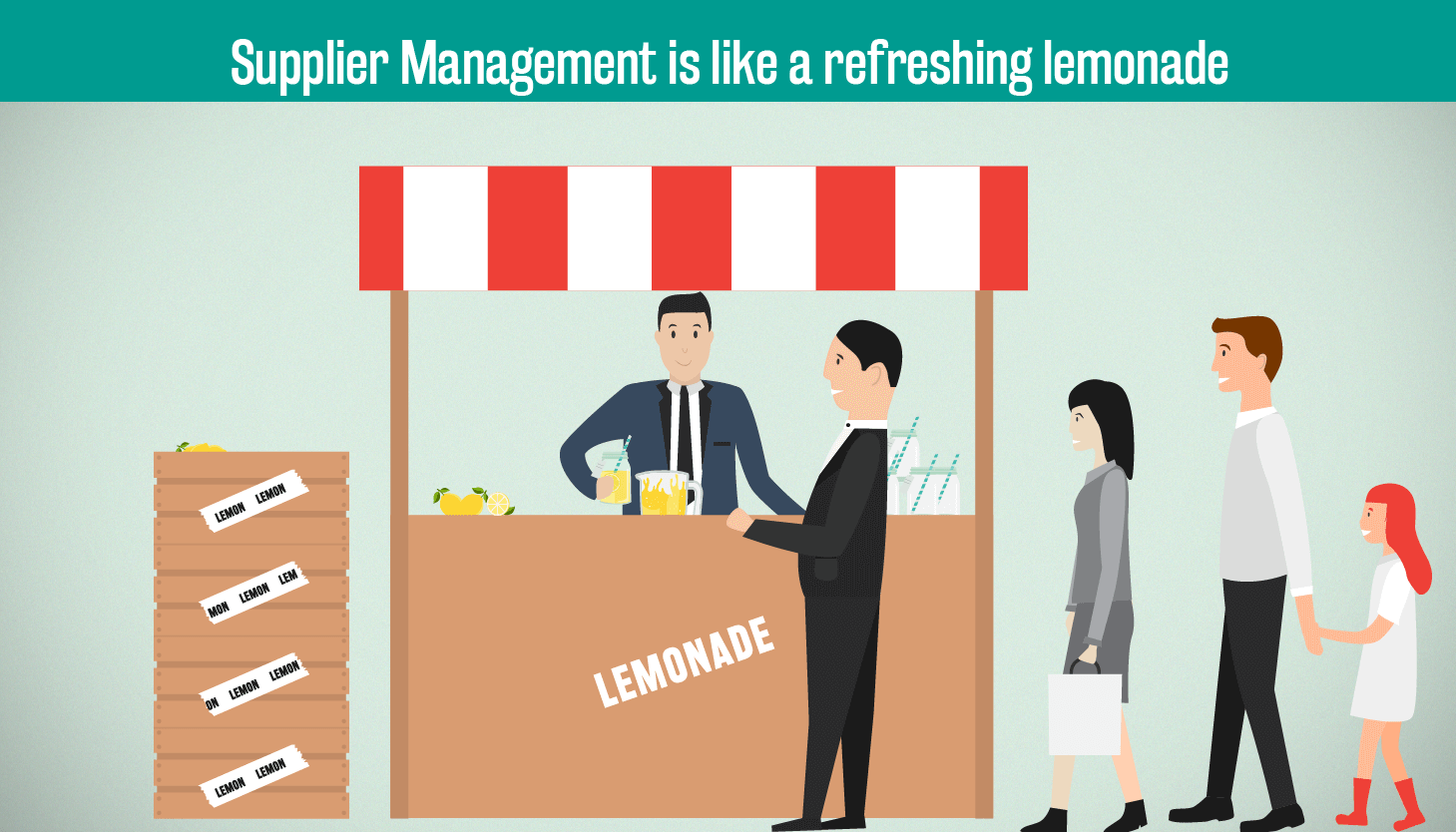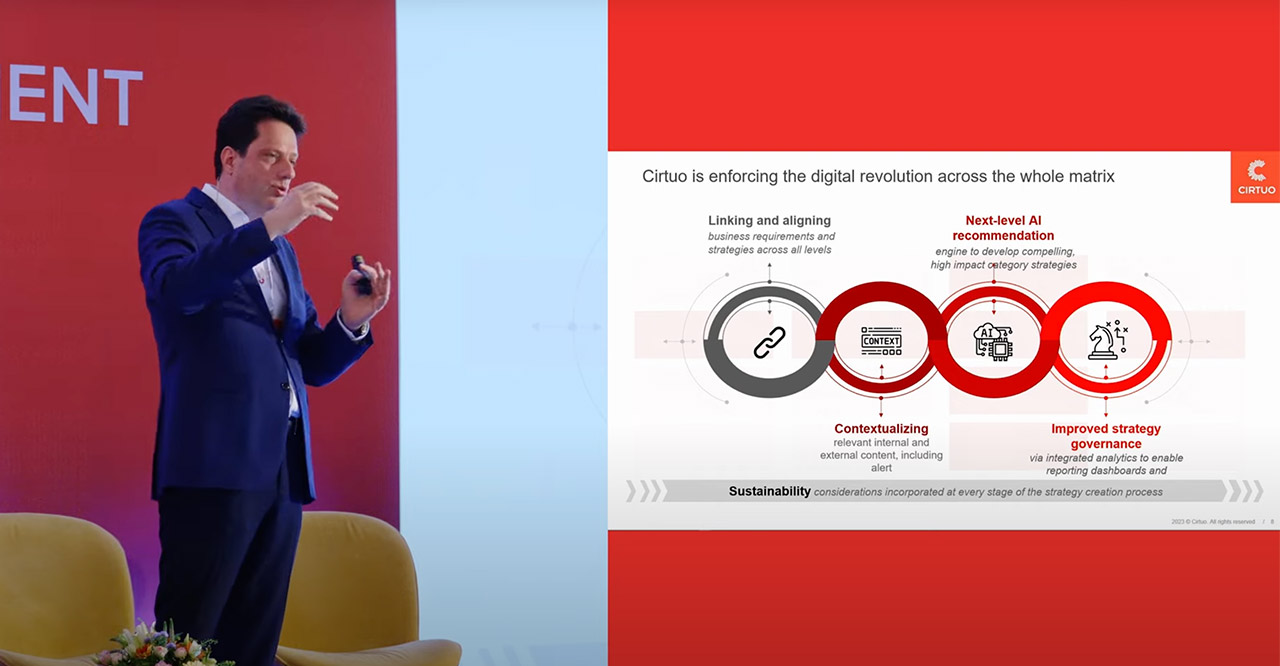Perhaps some of you got their first entrepreneurial impulse when you were a kid and you wanted to make some extra pocket money by setting up a lemonade stand on your street during the summer. And it’s a great premise for a small seasonal business. The weather is hot, people enjoy a refreshing drink and perhaps the biggest selling point is the cuteness of a kid acting as an adult. In this scenario, you’re simultaneously in the sales and the procurement department, while your parents are your lemon suppliers. And for a couple of weeks, everything’s going great, you’re selling to your friends and their parents while your piggy bank is overflowing. But, one day, your parent’s car breaks down and they are no longer able to supply you with lemons. Do you have a business if there are no lemons? No lemons, no business.
We started with a playful example of how important suppliers are to a manufacturing business. Just recently there was an article how BMW had to slow down production because of a shortage of steering gears supplied by Bosch:
https://www.reuters.com/article/us-bmw-production-bosch-idUSKBN18P0WJ
The procurement community uses the term Supplier (Relationship) Management a lot. It’s a topic that seems exhausted and yet very few companies have a true understanding and a quality strategic implementation. It’s one of those activities that still represents one of the biggest myths in procurement and everybody has a different definition. One of the largest contributing factors to that fact is the software industry that pushed for the term SRM and mostly presented operational and tactical activities while strategic activities could only be found in traces. That lead to a scarcity of true Supplier Management and it is often hidden and minimally incorporated within Category Management. It does make sense up to a point, because most of procurement organizations are arranged according to categories. And, of course, category strategy is the basis for supplier strategy. Yet, competences needed for Category Management are very different from those required for Supplier Management, which demands much more field work.
What’s important to me is to clearly define the role, activities and benefits of strategic Supplier Management, because in the wake of automatization and digitalization, this approach has a big future in front of it.
The first step is to look at it as a big picture:
It’s very important to have all your strategies aligned and not to skip any of the alignment steps thinking that they’re not necessary for your business. Only when you have your ducks in this kind of row can you reap the benefits from a strategic overview.
The next step is to differentiate between different kind of activities in Supplier Management. A lot of people mistake operational and tactical activities for strategic ones, but there is a simple representation of the order of procedures:
Supplier Management consists of three levels that all need to be present if you don’t want to run out of lemons:
- OPERATIONAL – regular interaction with the supplier in terms of proposals, orders, deliveries, invoices, and complaints
- TACTICAL – supplier qualification and audits, RFI / RFP / negotiation activities (sourcing), supplier performance tracking, supplier development
- STRATEGIC – identifying business requirements, understanding supplier’s market position, analyzing supplier’s strategy and motivation, developing supplier strategy, risk management for suppliers, and specifying concrete initiatives
When we developed the strategic module for Supplier Management within Cirtuo, we realized how important it was to really address every issue that we know from experience troubles the procurement team. And it was crucial for us to systematize the process into four easy steps: Analysis, Strategy, Initiatives and Results, so people can efficiently track and enhance their supplier relationships:
Another buzzword in procurement recently is calling suppliers partners. And that’s great if that really is the case, but often people will use that word casually, but in reality, they don’t treat their suppliers in that way. Just as suppliers don’t see the company as their partner. But the industry is changing and to be ahead of the competition it’s key to incorporate less chaotic relationships with the help of data and nurture crucial suppliers so that a partnership is not just another buzzword.
What can you expect when you do become a customer of choice to suppliers?
- a quality relationship that facilitates easy resolution of operational and tactical activities
- ensuring your delivery in case of bottlenecks, because, as you know, you’re not the only one in the game, your competitors are always ready and able to grab away a supplier
- you are granted access to exciting innovations and to the supplier’s own development capacities
- it’s much easier to manage performance and mitigate supplier risks.
Some will probably argue that if you’re in the procurement business, then you automatically have some sort of Supplier Management in place. And it’s true that whoever works in procurement has to deal with suppliers. Yet, measuring certain KPIs and informing suppliers about it once a year is not enough. It’s very different if someone deals with suppliers because they have to and if someone innovates to keep that relationship strong and has a system that keeps everything in check. By using the advantages of such a system, you’re able to transition from big data to smart data and by doing so you’re in the position to better understand suppliers’ motivation and strategy. Another big stepping stone is developing strategic competencies beyond sourcing and Category Management. Not to mention that automatization of operational and tactical activities is a must if we are to free up our team to develop strategic acuity.
It all boils down to keeping your lemonade stand reliable and stable, so people can enjoy thirst-quenching, delicious lemonade. Without those lemon suppliers, everyone is at a loss. When you’re taking care of your suppliers, you’re taking care of your business longevity.
If you want to keep up with industry insights, be sure to follow Cirtuo’s LinkedIn page





